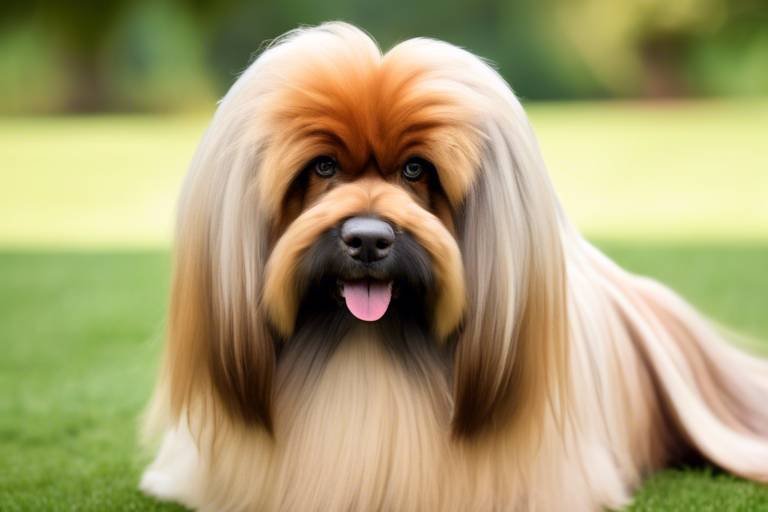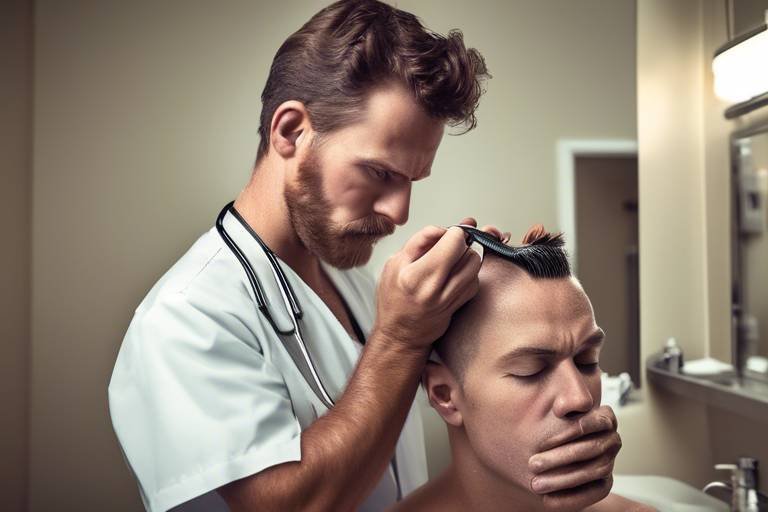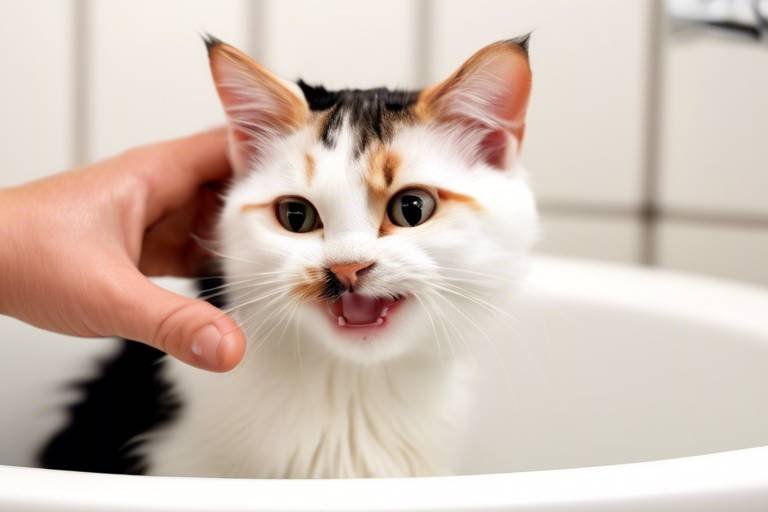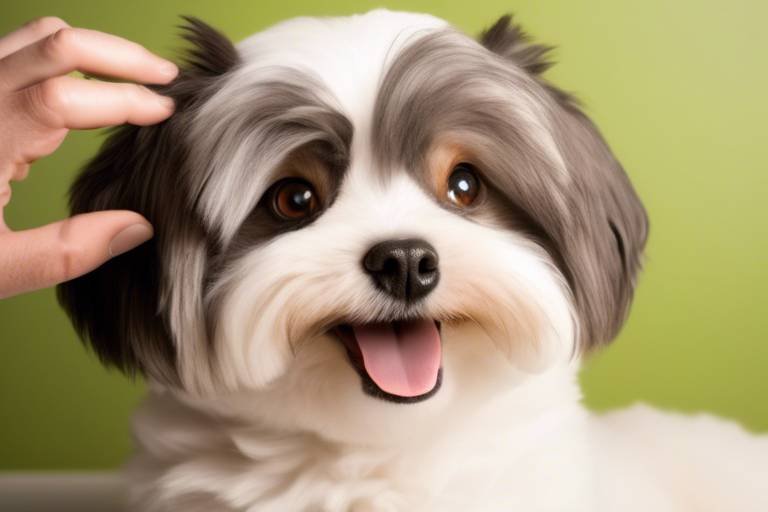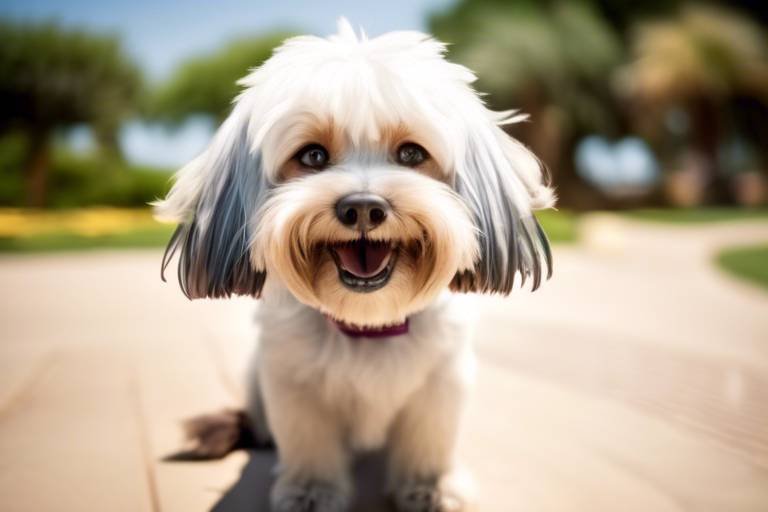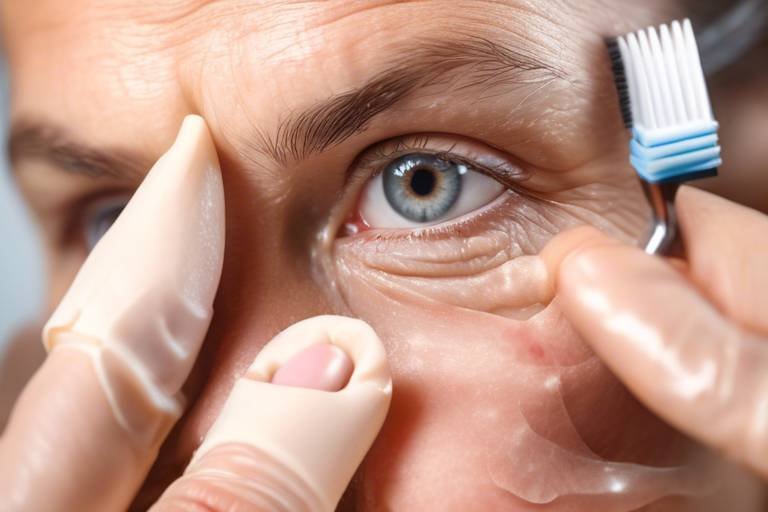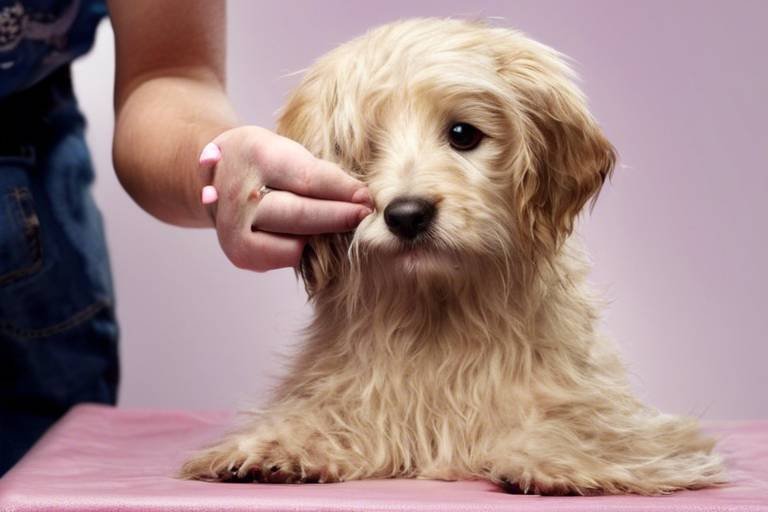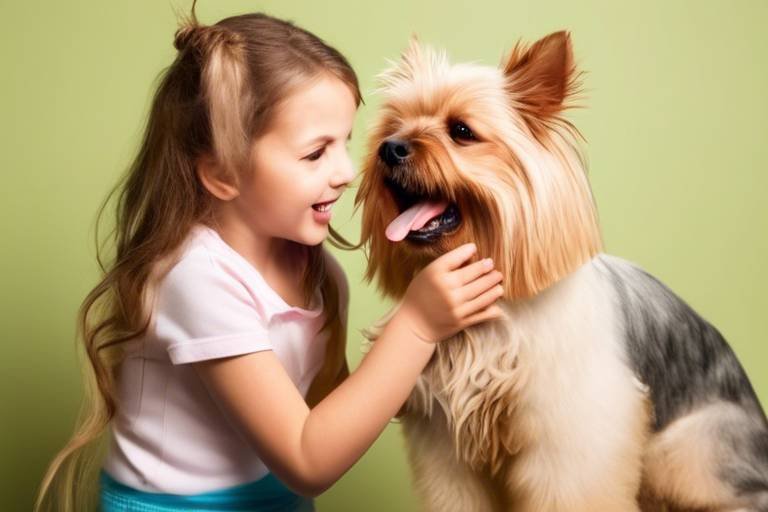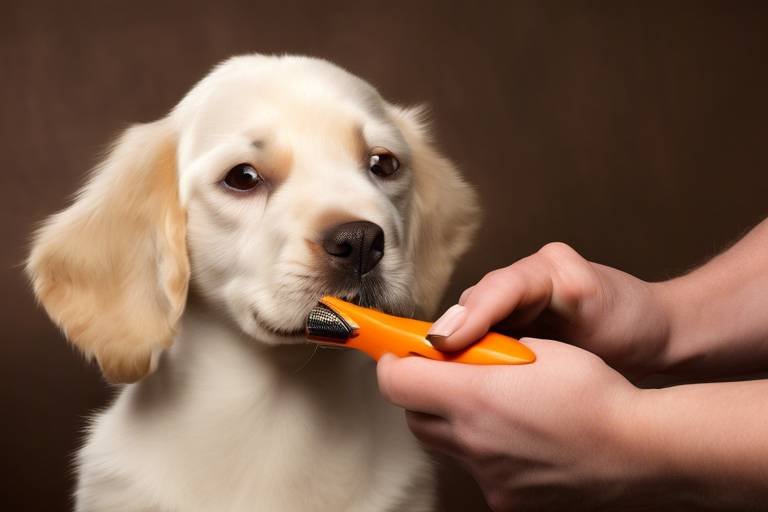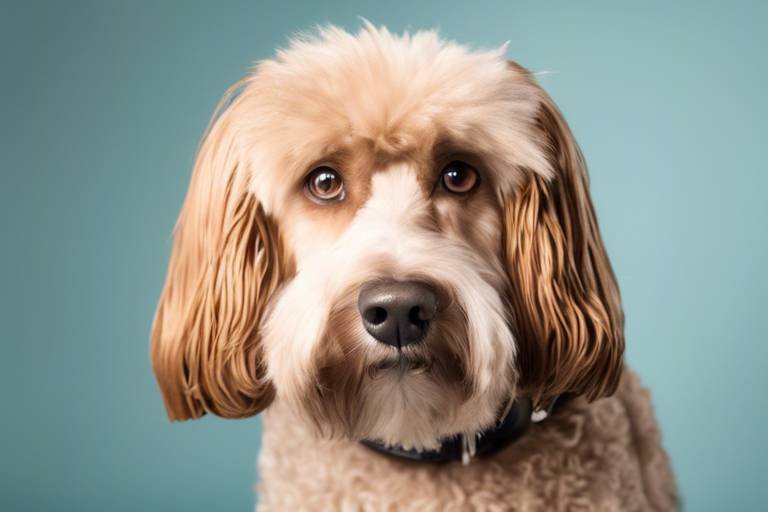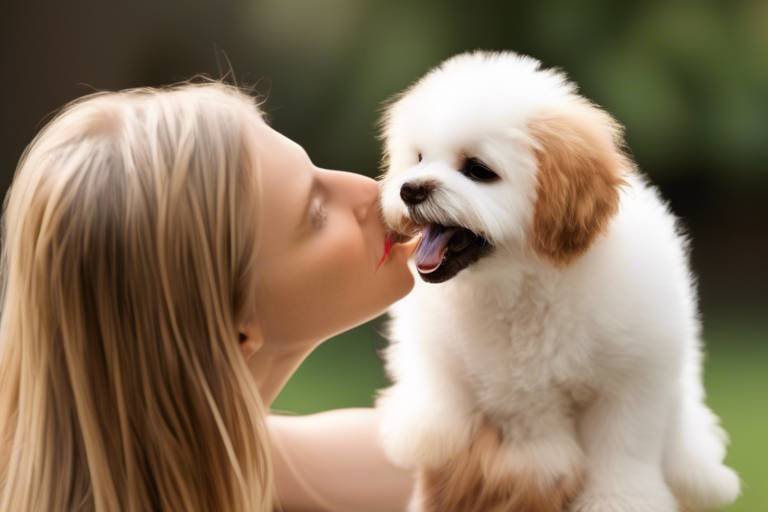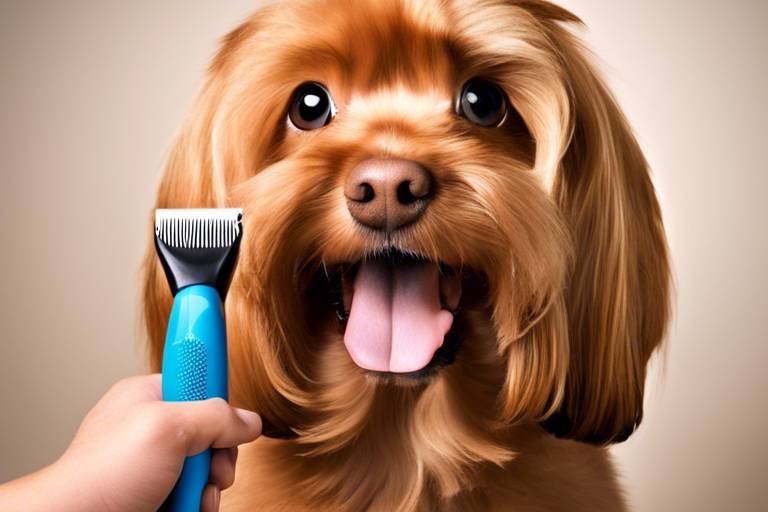How to Train Your Pet to Accept Regular Grooming
Grooming your pet is not just about keeping them looking good; it's about ensuring their health and happiness too! Imagine trying to convince a child to sit still for a haircut—it's a challenge, right? Well, pets can be just as fidgety! The key to making grooming a positive experience lies in understanding your furry friend and using the right techniques. In this article, we will explore effective strategies to help your pet become comfortable with regular grooming, ensuring a positive experience for both you and your furry friend.
Before diving into grooming techniques, it's crucial to understand your pet's behavior. Animals, just like us, have their own unique personalities and instincts. Some pets might be naturally more anxious, while others are laid-back. Observing your pet's reactions during grooming can help you tailor your approach. For example, if your dog starts to whine or pull away when you reach for a brush, it’s a sign they might need more time to adjust. Recognizing these behaviors allows you to create a more comfortable environment for your pet.
Now that you have a grasp on your pet's behavior, it's time to talk about grooming tools. Selecting the right tools is essential for a smooth grooming process. Just like a chef needs the right knives, you need the appropriate brushes, combs, and clippers to make grooming effective and enjoyable. The right tools can significantly reduce discomfort and make the experience more pleasant for your pet.
Different brushes and combs serve unique purposes, and choosing the right one can make all the difference. For instance, a slicker brush is great for removing mats from long-haired pets, while a bristle brush works wonders on short-haired breeds. To minimize discomfort during grooming, consider your pet's coat type and texture. A simple guide to brushes includes:
| Brush Type | Best For |
|---|---|
| Slicker Brush | Long-haired breeds |
| Brushing Mitt | Short-haired breeds |
| Deshedding Tool | Heavy shedders |
If your pet sheds frequently, deshedding tools can be a game changer! These tools help reduce the amount of loose fur that ends up on your floor and furniture. When using deshedding tools, it’s important to do it gently and not to overdo it. A little bit of deshedding goes a long way in maintaining a healthy coat and reducing shedding around the house.
Using clippers and scissors requires a bit more skill and confidence, but introducing these tools to your pet can ease their anxiety during grooming. Start by letting your pet sniff the tools while they’re off. Once they seem comfortable, you can turn them on for a few seconds while giving your pet treats. This positive association can help them feel more at ease when it’s time for a trim!
Bath time can be a daunting experience for many pets, but it doesn’t have to be! With the right techniques, you can make bath time enjoyable and stress-free. Start by brushing your pet to remove loose hair and mats, then use lukewarm water to wet their coat. Use a gentle pet shampoo and make sure to rinse thoroughly. To make the experience even better, consider using a non-slip mat in the tub and having treats on hand to reward your pet for their good behavior.
Creating a consistent grooming schedule helps your pet acclimate to the process. Just like we thrive on routine, pets do too! Establish a grooming routine that works for both of you. Whether it’s a quick brush every few days or a longer grooming session once a week, consistency is key. This routine will help your pet know what to expect and reduce anxiety.
Utilizing positive reinforcement can significantly improve your pet's grooming experience. Rewarding your pet with treats, praise, or playtime during and after grooming sessions encourages good behavior. For example, if your pet sits still while you brush them, shower them with praise and a tasty treat. This establishes a positive connection with grooming, making it something they look forward to rather than dread.
Gradual desensitization is a powerful technique for reducing anxiety. Start by introducing grooming activities slowly. For instance, if your pet is nervous about the brush, let them sniff it before you even touch them with it. Gradually increase the time you spend grooming them, and always pair it with treats and affection. Over time, your pet will become more comfortable and relaxed during grooming sessions.
Many pets may resist grooming due to fear or discomfort. Identifying common challenges can help you find effective solutions. For example, if your pet hates having their paws touched, start by gently massaging their paws during playtime to desensitize them. Always remember that patience and consistency are your best friends in overcoming these challenges.
- How often should I groom my pet? It depends on the breed and coat type. Long-haired pets may need grooming several times a week, while short-haired breeds may only need it once a month.
- What if my pet doesn't like being groomed? Start slow and use positive reinforcement to create a positive association with grooming.
- Can I groom my pet at home? Yes! With the right tools and techniques, you can groom your pet at home effectively.
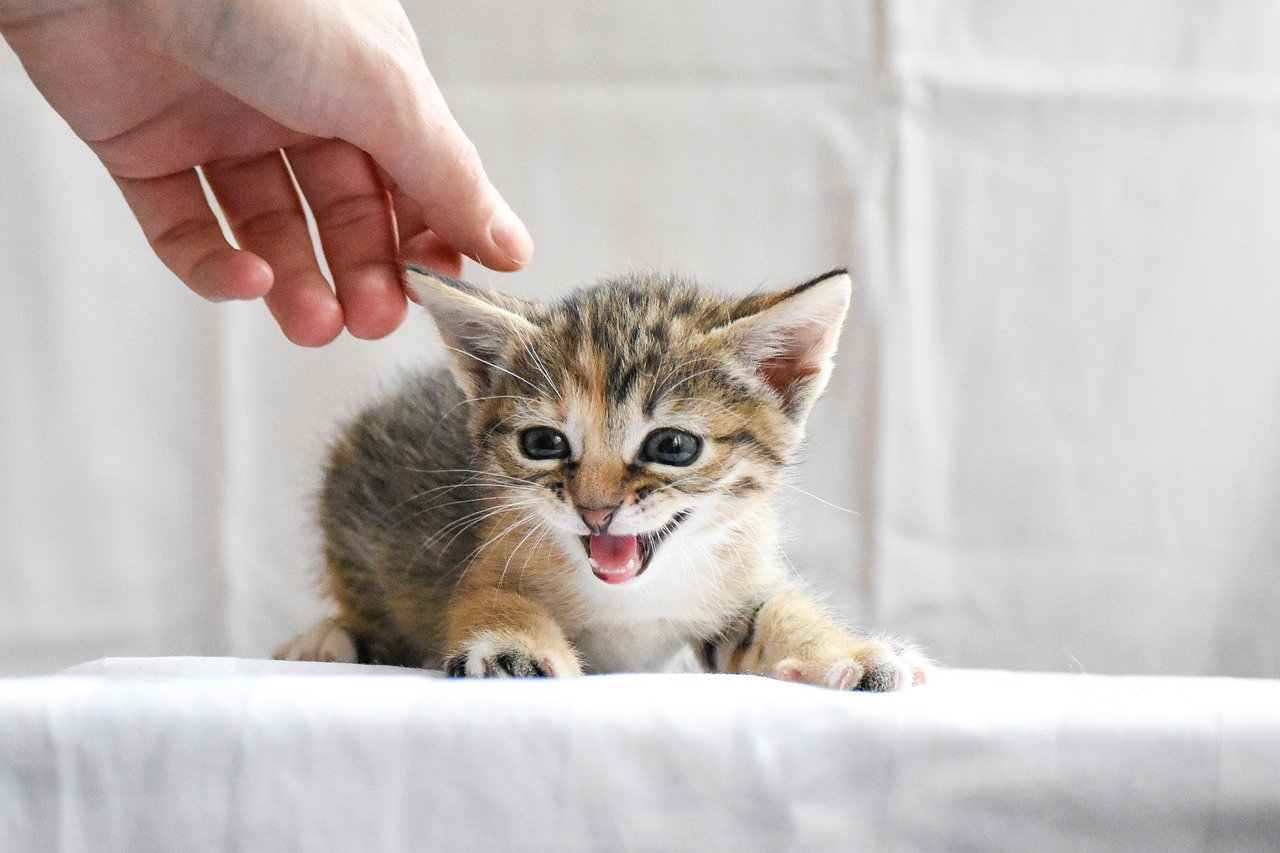
Understanding Your Pet's Behavior
When it comes to grooming your pet, understanding their behavior is crucial. Just like humans, pets have their own personalities and instincts that influence how they react to grooming. Have you ever noticed how your dog might squirm when you pull out the brush? This could be a sign of anxiety or discomfort. It's essential to recognize these signals so you can tailor your approach to meet their needs. For instance, some pets may feel threatened by the sound of clippers or the sensation of a brush on their skin. By observing their reactions, you can make grooming a more enjoyable experience.
Pets often display a range of behaviors during grooming sessions, and these can be categorized into several common reactions:
- Fearful Behavior: This includes hiding, shaking, or trying to escape. Such behaviors often stem from previous negative experiences.
- Aggressive Behavior: Some pets may growl, bite, or snap when they feel threatened. This is a clear indication that they are not comfortable.
- Submissive Behavior: Others might flatten their ears or roll over, signaling that they are scared but not aggressive.
- Curiosity: A few pets may approach grooming tools with curiosity, sniffing and exploring them. This is a good sign that they might be open to the grooming experience.
Understanding these behaviors allows you to adapt your grooming techniques. For example, if your pet shows signs of fear, consider using a softer brush or introducing grooming tools gradually. You might start by letting them sniff the tools before you use them. Establishing a calm environment can also help ease their anxiety. Remember, the goal is to create a positive association with grooming, so patience is key!
In addition to observing behavior, it's important to consider the breed and temperament of your pet. Some breeds are naturally more tolerant of grooming than others. For instance, a Labrador Retriever may be more accepting of a bath compared to a cat, who might see it as an affront to their dignity! Understanding these nuances can help you set realistic expectations and strategies for your grooming routine.
Ultimately, the more you know about your pet's behavior, the better equipped you'll be to handle grooming challenges. Whether your furry friend is a timid tabby or a rambunctious retriever, taking the time to understand their reactions will pave the way for a smoother grooming experience. So, the next time you prepare for a grooming session, take a moment to observe your pet's body language and adjust your approach accordingly. This will not only make grooming easier but will also strengthen the bond between you and your beloved companion.
Q: How can I tell if my pet is anxious about grooming?
A: Look for signs such as hiding, excessive panting, or trying to escape. If your pet is growling or snapping, they may feel threatened.
Q: What should I do if my pet is aggressive during grooming?
A: It's essential to remain calm. Consider consulting a professional groomer or trainer who can help you manage your pet's behavior.
Q: How often should I groom my pet?
A: This depends on the breed and coat type. Long-haired breeds may require weekly grooming, while short-haired pets might only need it monthly.
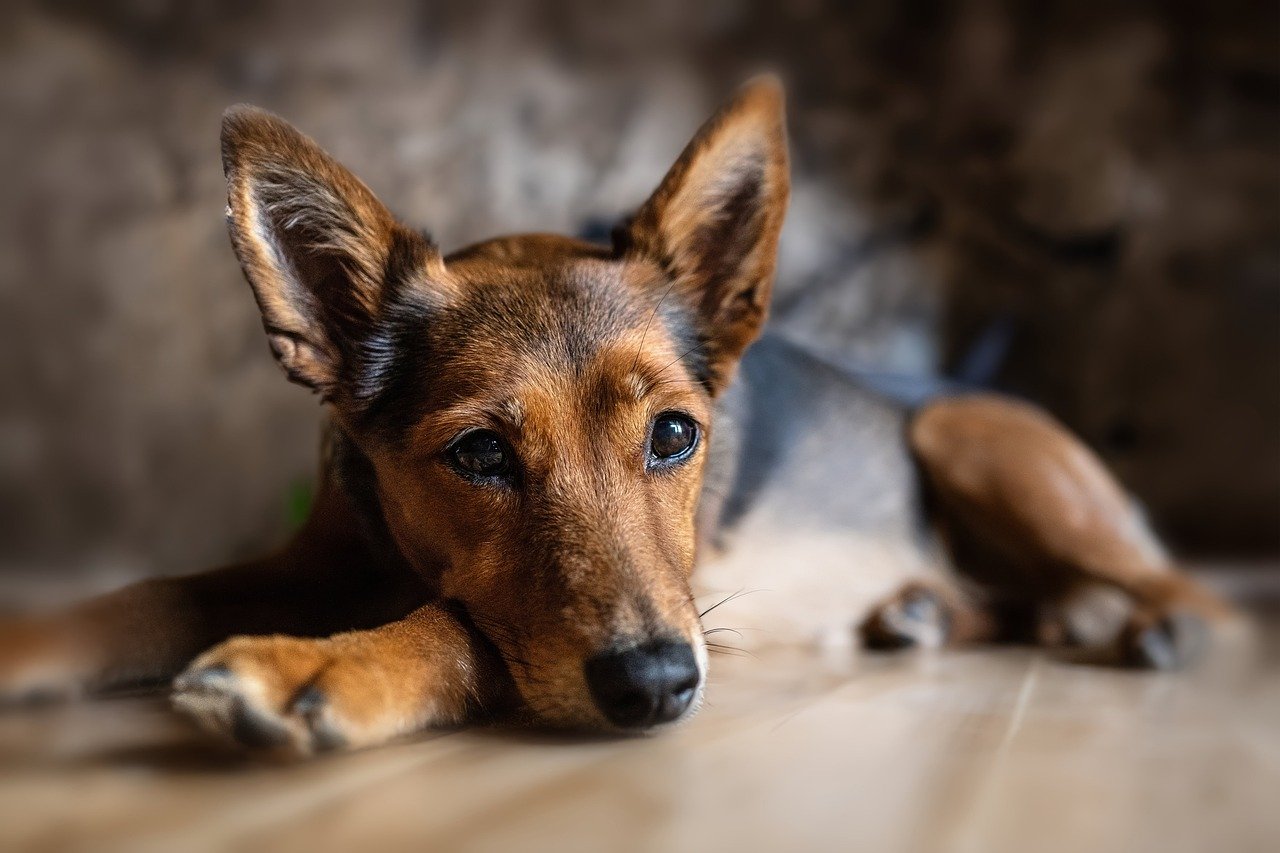
Choosing the Right Grooming Tools
When it comes to grooming your pet, selecting the right tools is crucial for a smooth and enjoyable experience. Just like a chef needs the right knives to create a culinary masterpiece, you need the proper grooming tools to keep your furry friend looking and feeling their best. Not only do the right tools make the process easier, but they also help minimize any discomfort your pet may feel during grooming sessions. So, what should you consider when choosing grooming tools?
First and foremost, it's essential to know your pet's coat type. Different breeds have different needs, and understanding these nuances can make all the difference. For instance, a long-haired Persian cat will require different grooming tools than a short-haired Beagle. If you're unsure about your pet's coat type, a quick visit to your veterinarian or a local groomer can provide valuable insights. Once you know what you're working with, you can make informed decisions about the tools you'll need.
Next, let's explore some common grooming tools and their specific purposes:
| Tool Type | Purpose | Best For |
|---|---|---|
| Brushes | Untangles fur and removes loose hair | Long-haired breeds, double-coated breeds |
| Combs | Detangles and smooths fur | All coat types, especially for fine fur |
| Deshedding Tools | Reduces shedding and improves coat health | Heavy shedders like Golden Retrievers |
| Clippers | Trims fur for a neat appearance | All breeds; especially those needing regular trims |
| Scissors | Shapes and trims fur | Long-haired breeds and those needing detailed grooming |
Now, you might be wondering how to choose between brushes and combs. Think of it this way: brushes are like a vacuum cleaner for your pet's fur, tackling the bulk of loose hair, while combs are like a fine-tooth comb, perfect for those stubborn tangles or knots. Depending on your pet's coat, you may need to use both in tandem for optimal results.
Another important consideration is the ergonomics of the tools. Grooming can take time, and you want to ensure that the tools feel comfortable in your hands. Look for tools with non-slip grips and lightweight designs to make the process easier on both you and your pet. After all, a relaxed groomer leads to a relaxed pet!
Lastly, don't forget about your pet's comfort during grooming. Some tools are designed specifically to be gentle on the skin, reducing the risk of irritation. For example, soft-bristled brushes can make a world of difference for pets with sensitive skin. Always keep an eye on how your pet reacts to different tools, and be prepared to switch things up if necessary.
In conclusion, choosing the right grooming tools is all about understanding your pet's specific needs and preferences. Take the time to research and invest in quality tools that will not only make grooming easier for you but also more enjoyable for your furry friend. Remember, grooming is not just about looks; it’s a bonding experience that can strengthen your relationship with your pet.
- What tools do I need for a short-haired dog? A simple brush and a deshedding tool should suffice for maintenance.
- How often should I groom my pet? It depends on their coat type; generally, once a week is a good starting point.
- Can I use human grooming tools on my pet? It's best to use tools specifically designed for pets to avoid injury or discomfort.
Brushes and Combs
When it comes to grooming your furry friend, the right tools can make all the difference. Choosing the appropriate tailored to your pet's coat type is essential to ensure a comfortable and effective grooming experience. Each type of brush serves a unique purpose, and understanding these differences can help you minimize discomfort while maximizing results.
For instance, if your pet has a short coat, a bristle brush is often ideal. It helps remove loose hair and dirt while distributing natural oils to keep the coat shiny. On the other hand, if your pet has a long or thick coat, a slicker brush can be your best friend. This type of brush features fine, short wires close together, which effectively detangle knots and mats without pulling too hard on the skin. Imagine trying to comb through a tangled ball of yarn; the right tool can make that task a breeze!
Now, let's dive deeper into the types of brushes and combs you may want to consider:
| Coat Type | Recommended Tools | Benefits |
|---|---|---|
| Short Coat | Bristle Brush | Removes loose hair and dirt; distributes oils. |
| Long Coat | Slicker Brush | Detangles knots and mats; gentle on skin. |
| Curly Coat | Pin Brush | Prevents matting; great for fluffing. |
| Double Coat | Undercoat Rake | Removes loose undercoat; reduces shedding. |
In addition to brushes, combs play a significant role in grooming. They are particularly useful for finishing touches and ensuring that no tangles are left behind. A wide-toothed comb is perfect for untangling, while a fine-toothed comb can help with precision work, such as around the face and ears. Think of it as the final polish on a beautiful piece of furniture; it’s the little details that truly make a difference!
Ultimately, the key to a successful grooming session is to pay attention to your pet's reactions. If they seem uncomfortable or anxious, consider switching tools or techniques. Remember, grooming should be a bonding experience rather than a chore. With the right brushes and combs in your arsenal, you can transform grooming time into a delightful ritual that both you and your pet look forward to!
Deshedding Tools
When it comes to keeping your pet's coat healthy and manageable, are a game changer. If you've ever walked through your home only to find a trail of fur following you, you know the struggle is real! Deshedding tools are designed specifically to remove loose hair from your pet's undercoat, which can significantly reduce shedding and keep your home cleaner. But how do you choose the right one for your furry friend? Let's dive in!
First, it's essential to understand the different types of deshedding tools available on the market. Each tool serves a unique purpose, and using the right one can make all the difference. For example, de-shedding brushes are great for long-haired breeds, while rubber grooming mitts can be effective for short-haired pets. Here’s a quick breakdown of some popular deshedding tools:
| Tool Type | Best For | Benefits |
|---|---|---|
| De-shedding Brush | Long-haired breeds | Removes loose hair and prevents matting |
| Rubber Grooming Mitt | Short-haired breeds | Gentle on skin, great for massaging |
| Undercoat Rake | Double-coated breeds | Removes dead undercoat without damaging top coat |
| Deshedding Tool | All breeds | Reduces shedding effectively and promotes healthy coat |
Using these tools correctly is vital for your pet's comfort. Start by introducing the deshedding tool slowly during playtime or cuddle sessions. This way, your pet associates the tool with positive experiences rather than stress. When you do start grooming, remember to be gentle. Short strokes work best, and always follow the direction of hair growth to avoid pulling or causing discomfort.
Another tip is to groom your pet outdoors if possible. This not only makes clean-up easier but also allows your pet to enjoy the fresh air while you work on their coat. Plus, you can easily see how much fur you’re removing, which can be quite satisfying! Just don’t forget to reward your pet with treats and praise throughout the process to reinforce positive behavior.
Incorporating deshedding tools into your regular grooming routine can lead to a healthier coat and a happier pet. Just think of it as a spa day for your furry companion! They get pampered, you get less fur everywhere, and everyone wins. Remember, grooming should be a bonding experience, so take your time, be patient, and enjoy the process!
- How often should I use deshedding tools on my pet? It depends on your pet’s coat type, but generally, once a week is a good starting point.
- Can I use deshedding tools on puppies? Yes, but ensure the tool is gentle and appropriate for their age.
- What if my pet hates being groomed? Gradual desensitization and positive reinforcement can help them adjust.
Clippers and Scissors
When it comes to grooming your furry friend, are essential tools that can make a world of difference. However, using them can be a bit daunting—both for you and your pet. The key to success lies in introducing these tools in a way that minimizes anxiety and discomfort. First off, let's discuss the importance of choosing the right clippers and scissors based on your pet's breed and coat type. For instance, long-haired breeds may require a different type of clipper than short-haired ones. Additionally, the size and weight of the clippers can affect how comfortable you feel while using them, so make sure you find a pair that fits well in your hand.
Before you even think about turning on those clippers, it's crucial to get your pet accustomed to their sound. Start by letting your pet sniff the clippers while they are turned off. You can even reward them with treats to create a positive association. Once they seem relaxed, turn on the clippers for a few moments while keeping your pet at a safe distance. This gradual introduction will help them understand that the clippers are not something to fear.
Now, let's talk about the actual grooming process. When you finally feel ready to start clipping, choose a quiet, comfortable space where your pet feels safe. Begin with small sections of fur, and always use a gentle touch. If you notice your pet becoming anxious, take a break and try again later. It's also important to keep a steady hand; sudden movements can startle your pet and make them more resistant to grooming.
Scissors, on the other hand, are perfect for trimming areas that clippers might not reach, such as around the eyes, ears, and paws. When using scissors, make sure to use rounded-tip scissors to prevent accidental nicks. Always keep your other hand close to your pet to help reassure them, and remember to reward them with treats and praise as you go along. This will help create a positive experience associated with grooming.
To summarize, here are some tips to keep in mind when introducing clippers and scissors to your pet:
- Choose the right tools based on your pet's coat type.
- Introduce the sound of clippers gradually.
- Practice in a safe, comfortable environment.
- Use rounded-tip scissors for sensitive areas.
- Always reward your pet to reinforce positive behavior.
By following these steps, you can help ease your pet's anxiety and make grooming a more enjoyable experience for both of you. Remember, patience is key! With time, your pet will learn to trust you with these tools, turning what was once a stressful task into a bonding experience that strengthens your relationship.
1. How often should I groom my pet?
The frequency of grooming depends on your pet's breed and coat type. Long-haired pets may require grooming every few days, while short-haired breeds may only need it weekly.
2. What if my pet is afraid of clippers?
Start by desensitizing them to the sound and feel of the clippers. Use treats and praise to create positive associations, and go at their pace.
3. Can I use human clippers on my pet?
It's best to use clippers specifically designed for pets, as they are tailored to handle different fur types and are generally safer for your pet.
4. How do I know if I'm using the clippers correctly?
If your pet seems comfortable and relaxed, you’re likely doing it right. If they show signs of distress, take a break and reassess your technique.
Bathing Techniques
Bathing your pet can sometimes feel like trying to wrestle a slippery fish! But fear not; with the right techniques, you can transform bath time into a fun and enjoyable experience for both you and your furry friend. First, it's essential to create a calm environment. Choose a space that feels safe and comfortable for your pet, whether it's a bathtub, sink, or even outside with a hose on a warm day. Make sure the water is lukewarm—too hot or too cold can make your pet anxious.
Before you even turn on the water, prepare your supplies. Gather everything you need: pet shampoo, towels, a brush, and perhaps some treats for positive reinforcement. Having everything on hand will minimize the time your pet spends waiting, which can help reduce anxiety. Now, let's talk about the actual bathing process. Start by gently wetting your pet's coat, avoiding their face and ears initially. This gradual approach helps them get used to the sensation of water without overwhelming them.
When applying shampoo, use a product specifically designed for pets, as human shampoos can irritate their skin. Lather it up gently, massaging it into their coat while speaking softly to reassure them. You can even turn it into a game by pretending to wash away dirt monsters! After rinsing thoroughly, make sure no shampoo residue remains, as it can lead to skin irritation. Remember, rinsing is just as important as lathering—think of it as washing away the day's adventures!
After the bath, it's time for drying. Use a towel to gently blot your pet's coat, absorbing excess water. If your pet is comfortable with it, you can use a pet dryer on a low setting, keeping it at a safe distance. Always keep an eye on your pet's body language during this process; if they seem stressed, take a step back and offer some comforting words or treats.
Finally, don't forget to reward your pet after their bath! A little treat or extra playtime can go a long way in making them associate bath time with positive experiences. Over time, with patience and consistency, your pet will likely begin to enjoy their baths, turning what was once a dreaded chore into a delightful bonding session.
- How often should I bathe my pet? It depends on the breed and lifestyle of your pet. Generally, once a month is a good rule of thumb, but consult your vet for personalized advice.
- What type of shampoo should I use? Always use a shampoo specifically formulated for pets to avoid skin irritation.
- My pet hates water. What can I do? Gradual desensitization and positive reinforcement can help. Start by introducing them to water in small amounts and rewarding them for calm behavior.
- Can I bathe my pet outside? Yes! Bathing outside can be a fun change of scenery for your pet, especially on warm days.

Establishing a Routine
Creating a consistent grooming routine for your pet is not just a good idea; it's a game changer! Think of it as establishing a trust bridge between you and your furry friend. When your pet knows what to expect, they are much more likely to be relaxed and cooperative during grooming sessions. So, how do you go about building this routine? Let’s dive into some effective strategies!
First, choose a specific time of day that works best for both you and your pet. This could be in the morning before your daily activities or in the evening when things are winding down. Consistency is key! Just like how we humans thrive on routine—think of your morning coffee or evening wind-down—pets also appreciate predictability. When they know it’s grooming time, they can mentally prepare for it.
Next, consider the duration of each grooming session. Start with shorter sessions, especially if your pet is new to grooming. A 5 to 10-minute session is a great starting point. As your pet becomes more comfortable, gradually increase the duration. This gradual approach allows your pet to acclimate without feeling overwhelmed. You might even find that they start to look forward to these moments!
Another important aspect is to make grooming a positive experience. Incorporate fun elements, like their favorite toys or treats, during grooming time. For instance, you could offer a treat after brushing a certain area or use a toy to distract them while you clip their nails. This not only makes grooming more enjoyable but also reinforces the idea that grooming equals something good. It’s like turning a chore into a fun game!
Now, let’s talk about the environment. Set up a designated grooming area that is both comfortable and familiar to your pet. This could be a cozy corner of your living room or a special mat in the bathroom. Make sure it’s a calm space, free from distractions. You want your pet to feel safe and relaxed, so they associate that spot with grooming. You can even play some soft music to create a soothing atmosphere!
Lastly, don’t forget to track your progress! Keeping a simple grooming log can help you monitor your pet's comfort level and any changes in their behavior. You can note down how long each session lasted, what tools were used, and how your pet reacted. This log will not only help you stay organized but also allow you to celebrate small victories along the way!
In summary, establishing a grooming routine is about creating a safe, predictable, and enjoyable experience for your pet. With patience, consistency, and a little creativity, you can transform grooming from a dreaded task into a bonding experience. Remember, the goal is to make your pet feel loved and cared for, and with time, they’ll come to embrace grooming as a part of their routine!
- How often should I groom my pet? - The frequency depends on the breed and coat type. Long-haired breeds may require grooming several times a week, while short-haired pets might need it less often.
- What if my pet hates grooming? - Start slowly and use positive reinforcement. Gradual desensitization can help your pet become more comfortable over time.
- Can I groom my pet at home? - Absolutely! With the right tools and techniques, home grooming can be safe and effective.
- What tools do I need for grooming? - Essential tools include brushes, combs, clippers, and nail trimmers. Choose tools based on your pet's specific needs.
Positive Reinforcement Strategies
When it comes to grooming your pet, positive reinforcement is your best friend. This technique is all about rewarding your furry companion for their good behavior during grooming sessions. Think of it as a way to turn those potentially stressful moments into something enjoyable! By using treats, praise, or even playtime as rewards, you can create a positive association with grooming that will make your pet more willing to cooperate. Imagine your pet's wagging tail or purring when they realize that grooming leads to fun and tasty rewards!
One effective method is to start with short grooming sessions. This way, you can gradually introduce your pet to the process without overwhelming them. For instance, if you're brushing your dog, begin with just a few strokes and then immediately reward them with a treat or affectionate praise. Over time, as your pet becomes more comfortable, you can increase the duration of the grooming sessions. It’s all about building their confidence and trust in you as their groomer.
Another strategy involves using a clicker, which can be an incredibly effective tool for training. When your pet behaves well during grooming, you can click the device and follow it up with a treat. This creates a clear connection between their good behavior and the reward. For example, if your cat sits still while you brush them, a quick click followed by a tasty treat will reinforce that behavior. Over time, your pet will learn that grooming is not only tolerable but also rewarding!
It’s also essential to pay attention to your pet's body language. If they seem anxious or uncomfortable, take a step back and give them a break. You can always return to grooming later, reinforcing the idea that they are in control of the situation. By being responsive to their needs, you help reduce their anxiety and build a more trusting relationship. Remember, grooming should be a bonding experience, not a battleground!
Here’s a quick overview of some positive reinforcement strategies you can employ:
- Treats: Use small, tasty treats to reward your pet immediately after a successful grooming session.
- Praise: Verbal affirmations like "Good boy!" or "Well done!" can go a long way in encouraging your pet.
- Playtime: Incorporate a fun game or a favorite toy as a reward after grooming to create a positive association.
Incorporating these strategies into your grooming routine not only makes the process smoother but also strengthens the bond between you and your pet. Remember, patience is key! With time and consistent positive reinforcement, your pet will likely come to see grooming as a pleasurable experience rather than a chore.
Gradual Desensitization
When it comes to grooming your pet, one of the most effective techniques to reduce anxiety is . This approach involves slowly introducing your furry friend to the grooming process in a way that feels safe and non-threatening. Think of it as a gentle introduction to a new experience, much like how we might ease ourselves into a cold swimming pool—one step at a time. The goal here is to help your pet associate grooming with positive experiences rather than fear or discomfort.
To start, you should first identify the specific grooming activities that cause your pet the most stress. Is it the sound of the clippers? The feel of the brush? Or perhaps the water during bath time? Once you pinpoint these triggers, you can begin the desensitization process. For instance, if your pet is fearful of the brush, you might start by simply allowing them to sniff the brush while offering treats. This small act can create a positive association with the tool.
Next, gradually increase your pet's exposure to the grooming process. Here’s a simple step-by-step guide to help you through the desensitization journey:
- Step 1: Introduce the grooming tool without any grooming. Let your pet explore it at their own pace.
- Step 2: Begin by gently brushing a small section of fur for just a few seconds, then immediately reward your pet with praise or a treat.
- Step 3: Gradually increase the duration of brushing sessions over time, ensuring that each session ends on a positive note.
- Step 4: As your pet becomes more comfortable, introduce other grooming tools in a similar fashion, such as clippers or scissors.
It’s important to be patient during this process. Every pet is unique, and some may take longer to adjust than others. If your pet shows signs of stress, such as whining or trying to escape, it’s crucial to take a step back and slow down the pace. Always remember to keep sessions short and positive, gradually building up to longer grooming times.
Additionally, incorporating positive reinforcement throughout the desensitization process can make a world of difference. Use treats, praise, or even their favorite toy to reward your pet for calm behavior during grooming. This not only reinforces good behavior but also builds trust between you and your furry companion.
Incorporating gradual desensitization into your grooming routine can transform what was once a stressful experience into a bonding opportunity. Over time, your pet will learn to look forward to grooming sessions, and you’ll both enjoy the process much more. Remember, the key is patience and consistency—just like building a relationship, it takes time to foster that comfort and trust.
- Q: How long does it take for a pet to get used to grooming?
A: The duration varies by pet; some may adapt in a few sessions, while others may take weeks or even months. Consistency is key! - Q: What should I do if my pet becomes aggressive during grooming?
A: If aggression occurs, stop the grooming session immediately. Reassess your approach and consider consulting a professional trainer or groomer for assistance. - Q: Can I use desensitization techniques for other vet visits?
A: Absolutely! The principles of gradual desensitization can be applied to various situations, including vet visits, car rides, and more.

Addressing Common Grooming Challenges
Grooming your pet can sometimes feel like trying to navigate a maze blindfolded. Many pets exhibit resistance to grooming due to various reasons, including fear, discomfort, or simply not being accustomed to the process. Understanding these common challenges is the first step toward creating a more positive grooming experience for both you and your furry friend. Let's dive into some typical issues you might face and how to tackle them effectively.
One of the most prevalent challenges is fear. Pets, especially those that are new to grooming, may associate the process with negative experiences. This fear can manifest in various ways, such as hiding, growling, or trying to escape. To combat this, it's crucial to create a calm environment. Start by introducing grooming tools slowly. Let your pet sniff and explore the brushes or clippers without immediately using them. This gradual introduction helps demystify the tools and reduces anxiety.
Another common hurdle is discomfort during grooming. Some pets may have sensitive spots or may not enjoy being touched in certain areas. For instance, many dogs dislike having their paws handled. To help alleviate discomfort, consider the following:
- Know Your Pet's Preferences: Pay attention to your pet's body language. If they flinch or pull away, take note and adjust your approach accordingly.
- Use Gentle Techniques: Always use a soft touch. For pets with sensitive skin or fur, opt for brushes designed for their coat type to minimize irritation.
- Short Sessions: Keep grooming sessions brief at first. Gradually increase the duration as your pet becomes more comfortable.
Additionally, some pets may exhibit aggressive behavior during grooming. This can stem from fear or discomfort, but it can also be a result of past negative experiences. If your pet shows signs of aggression, it's essential to remain calm and avoid punishing them, as this can escalate the situation. Instead, consider consulting a professional groomer or a veterinarian who can guide you in managing your pet’s behavior.
Sometimes, the challenge lies in the pet owner’s own anxiety. If you’re nervous about grooming, your pet can sense that energy, which may further heighten their anxiety. To overcome this, practice relaxation techniques before grooming sessions and maintain a positive demeanor. Remember, your pet looks to you for cues on how to react, so your calmness can greatly influence their behavior.
Finally, regular grooming can be a new concept for some pets. If they’ve never been groomed before, it might take time for them to adjust. Consistency is key here. Establish a routine that includes grooming as a regular part of their life. This not only helps them get used to the process but also strengthens the bond between you and your pet.
In summary, addressing common grooming challenges involves understanding your pet's unique needs and behaviors. By creating a calm environment, using gentle techniques, and establishing a routine, you can transform grooming from a daunting task into a bonding experience. Remember, patience is your best friend in this journey!
Here are some frequently asked questions regarding grooming challenges:
- What should I do if my pet is afraid of the grooming tools? Start by introducing the tools gradually. Allow your pet to sniff and explore them before using them during grooming.
- How can I tell if my pet is uncomfortable during grooming? Look for signs such as flinching, growling, or trying to escape. Adjust your approach based on their reactions.
- Is it normal for my pet to resist grooming? Yes, many pets resist grooming due to fear or discomfort. With patience and positive reinforcement, you can help them become more comfortable.
Frequently Asked Questions
- How can I help my pet feel more comfortable with grooming?
Start by introducing grooming tools gradually. Let your pet sniff and explore them before using them. Pair the experience with treats and praise to create positive associations. Remember, patience is key!
- What grooming tools should I use for my pet?
The right tools depend on your pet's coat type. For short-haired pets, a rubber brush can work wonders. Long-haired pets often benefit from a slicker brush. Don't forget deshedding tools for those furry friends that shed a lot!
- How often should I groom my pet?
It varies by breed and coat type! Generally, long-haired pets may need grooming every few days, while short-haired pets can be groomed weekly. Establishing a routine helps your pet get used to the process.
- What should I do if my pet resists grooming?
Take a step back! Use positive reinforcement techniques, like treats or playtime, to encourage your pet. Gradual desensitization can also help—start with just a few minutes of brushing and gradually increase the time.
- Are there specific bathing techniques I should follow?
Yes! Make bath time enjoyable by using lukewarm water and a gentle pet shampoo. Use a non-slip mat in the tub to help your pet feel secure. Always rinse thoroughly and reward them afterward!
- Can grooming tools cause discomfort to my pet?
If used incorrectly or if the tools are not suited for your pet's coat, they can cause discomfort. Always choose the right tool and technique for your pet's fur type and be gentle while grooming.
- What if my pet has skin issues?
If your pet has skin issues, consult your veterinarian before grooming. They can recommend suitable products and techniques to avoid aggravating the condition during grooming.
- How can I make grooming a fun experience for my pet?
Incorporate play and treats into grooming sessions! Use their favorite toys or give them a special treat afterward. The goal is to create a positive environment that your pet associates with grooming.



